 The national costume of Switzerland is versatile but made in the same style; bright but modest; eccentric but balanced; convenient but beautiful. Such style of clothing is typical for the North Europe. The women's traditional outfit is very feminine, with pretty and extraordinary accessories. The men's folk dress in some regions can be very simple and ordinary, and in other parts of the country, it can look rather aristocratic and stylish. Swiss national clothing was originated from the lifestyle, environment and traditions of Swiss people.
The national costume of Switzerland is versatile but made in the same style; bright but modest; eccentric but balanced; convenient but beautiful. Such style of clothing is typical for the North Europe. The women's traditional outfit is very feminine, with pretty and extraordinary accessories. The men's folk dress in some regions can be very simple and ordinary, and in other parts of the country, it can look rather aristocratic and stylish. Swiss national clothing was originated from the lifestyle, environment and traditions of Swiss people.
There 26 cantons (provinces which have the characteristics of semi-sovereign states) in Switzerland. Each of the cantons has its own unique history, constitution, government, and, of course, traditions. That's why the clothing tradition in Switzerland is very rich and versatile. The traditional clothing of each canton (photos are at the end of the article) differs from the others (sometimes a little, and sometimes pretty much).
This makes Swiss national holidays and folk festivals so much interesting for tourists. The bright variety of Swiss national costumes is astonishing.
The set of clothing which is now considered to be the national costume of Switzerland is historically a peasant dress. Swiss aristocracy used much less specific for definite regions attire, their clothing was common for Swiss, German, French, Italian and Austrian nobility. No typical features of their own country. Unlike them, Swiss peasants used costumes that suited their way of life and weather conditions. Such clothes can say much more about the culture and lifestyle of Switzerland.
Mostly garments of Swiss ordinary people were made from homespun сloth: cotton in summer and wool in winter. The costume varied depending on the social class, marital status, age, region and other characteristics of the owner.
Universal male traditional costume
Swiss men wear trousers or breeches, a smoked shirt, a long-sleeved jacket or/and a vast, a headgear, dark woolen tights or stockings, and shoes. Though, as we said earlier, there are plenty of varieties of attire for men in Switzerland.
Men in Alpine regions of Switzerland use lederhosen (leather shorts) which are similar to Bavarian traditional clothing. Lederhosen are very convenient for such activities as working in the garden, hunting, hiking, climbing and so on. So, they are used rather often by men in mountain regions.
Typical headdresses for Swiss men are short-brimmed felt hats in colder season and wide-brimmed straw hats in summer.
Swiss traditional shoes are similar for both men and women. They're black slip-on shoes with large metal buckles on top.
Male traditional "Sunday best outfit" is very formal and embellished. It is decorated with jewelry, embroidery, decorative elements (buckles, chains etc.), neckerchiefs and fine accessories (pocket watches, canes, trimmed belts and similar implements).
There is also an unusual tradition in Switzerland. Bachelors use a bright red handkerchief which is visible from the left pocket of their trousers. This is a sign that the man is unmarried. Actually, it's a nice tradition, very convenient for women who are also single.
Share your own or your ancestors’ love story with the world!
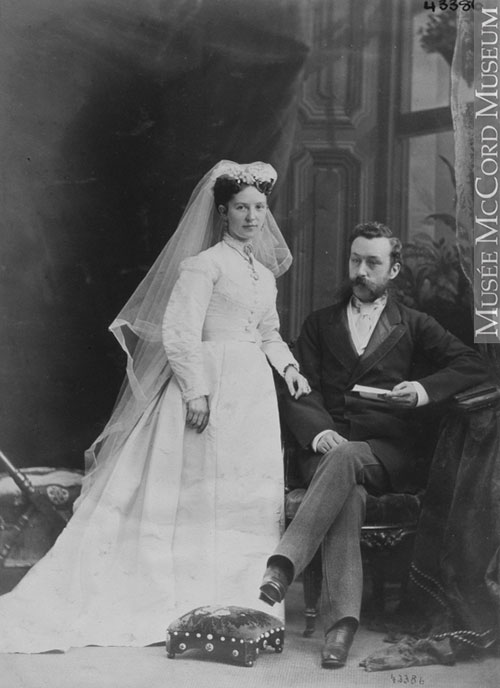
Our partner website Weddingsallovertheworld.com starts a new project where people can publish their own Wedding Story or – and that’s even more exciting! – the Wedding Story of their ancestors. If you know how your grandparents, great grandparents, or other relatives met and got married, don’t miss the chance to tell their story. Isn’t it romantic and adorable to read real-life love tales that happened dozens or even hundreds of years ago?!
You’ll find details here: Your Wedding Story
Universal female traditional costume
Swiss women wear colorful smocked dresses with puffed sleeves and tight ribbon crest tops, aprons, lace bonnets or other offbeat headdresses, stockings, shoes and embroidered bags. The dress can be replaced by a shirt with puffed sleeves, a tight top (corset or something similar), and a full skirt worn with an apron on top. The shirt is usually white and the rest of the costume is very colorful with beautiful decorations and accessories. The bodice is typically closed with hooks or laсing.
The apron is worn over the skirt and tied at the back. It protects the rest of the costume during everyday usage. So, a woman can have only one dirndl dress (a kind of dress typical for Switzerland, Germany, and some other countries), but several aprons. This helps to be always tidy and look different. A very useful trick for a woman.
There is a great variety of Swiss female headgears. There can be bonnets, small hats without brims, wide-brimmed felt or straw hats, starched hats with a veil, hats of bizarre shape (e.g. hats in Mohawk shape or very high ornate hats) etc.
Women in Switzerland often wear tights, usually red or white. The shoes are similar for both men and women. They're black slip-on shoes with large metal buckles on top.
The color of clothes is very important to Swiss women. Sometimes the color of their outfits can indicate the canton, marital status and so on. For example, typical color of clothing for Zurich is blue and for Watchwil is white. In Obwalden single women braid their hair and put a white ribbon in it; married women wear white bonnets. Jewelry can also be a definition of marital status: married women usually use golden jewelry and decorations while single women wear silver.
The typical feature about the traditional women's Swiss costume is the beautiful floral embroidery. It always embellishes "Sunday best outfits". Usually, the flowers which can be found in Swiss gardens are embroidered on clothing. Women are trained in needlework from their childhood (at least, they used to be, nowadays such tradition is not so popular anymore). So, they often embellish their costumes with embroidery. The most popular motifs are edelweiss flowers, mountains and cows with cowbells. But every region has its typical themes and heroes, like fruit, animals, shepherds, flowers, people in national costumes etc.
Here are some photos of traditional Swiss costumes according to the cantons of their origin:

Canton of Aargau. Women's traditional costume. Drawing from Swiss National Library
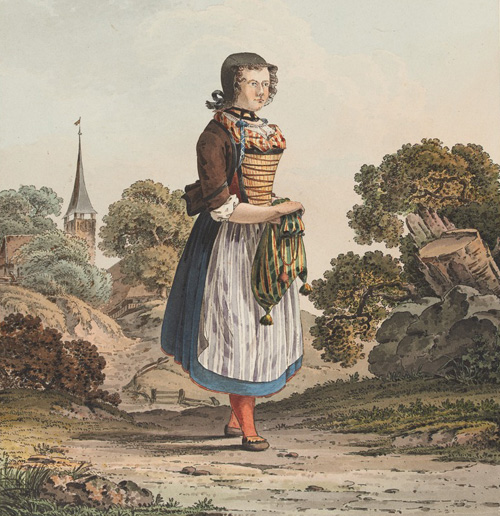
Canton of Basel-Landschaft. Female traditional clothing. Drawing from Swiss National Library

Canton of Bern. Women's festive attire. Photo from Wikipedia.org

Canton of Bern. Men's festive attire. Photo from Wikipedia.org
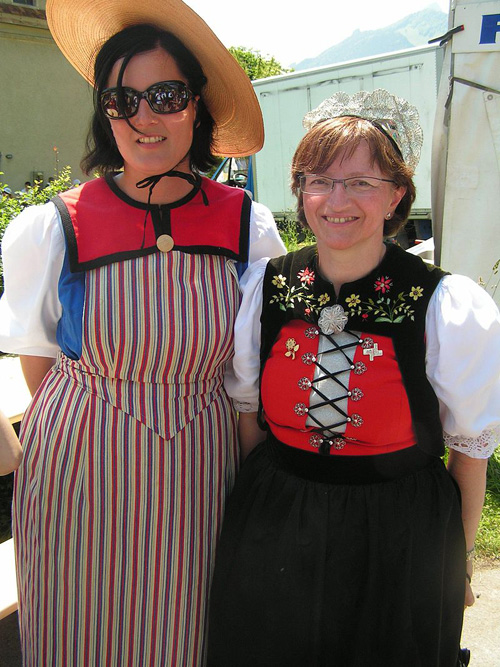
Canton of Fribourg. Women in national costumes. Photo from Wikipedia.org
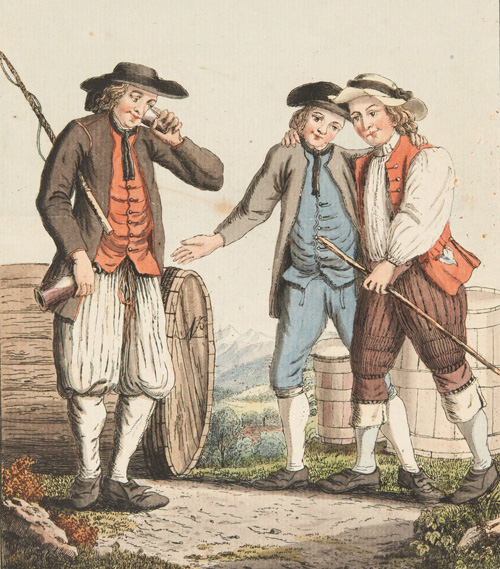
Canton of Fribourg. Men in national costumes. Drawing from Swiss National Library
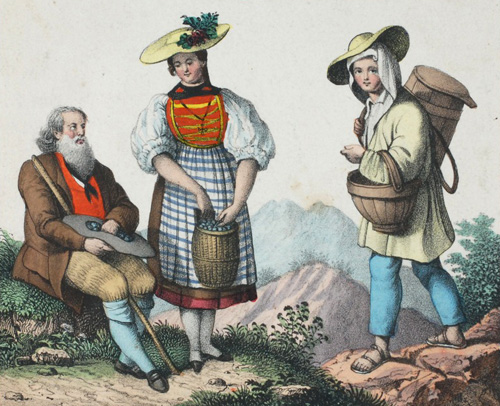
Canton of Glarus. People in traditional clothing. Drawing from Swiss National Library
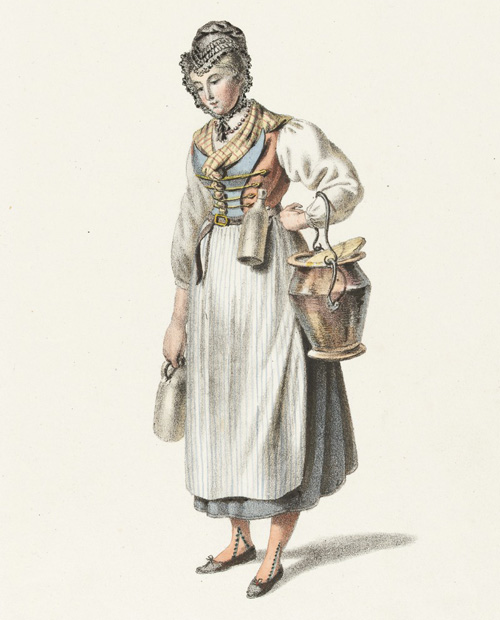
Canton of Graubünden. Woman in traditional outfit. Drawing from Swiss National Library
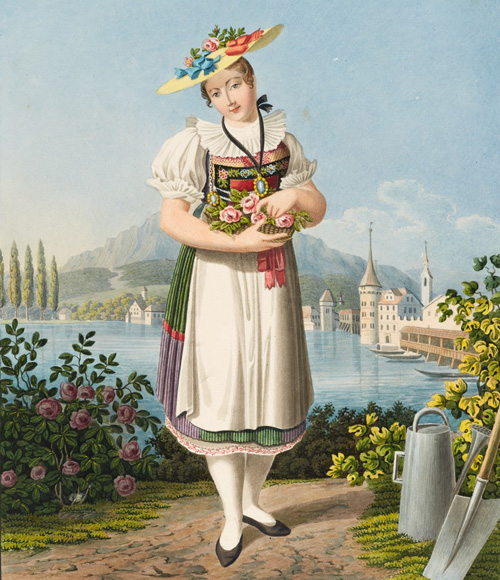
Canton of Lucerne. Woman wearing national attire. Drawing from Swiss National Library
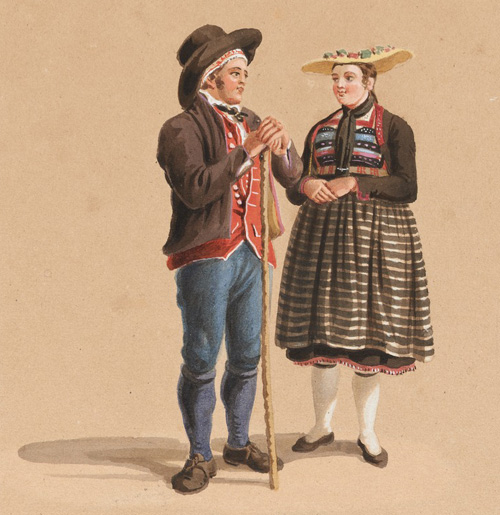
Canton of Lucerne. Man and woman wearing national attires. Drawing from Swiss National Library
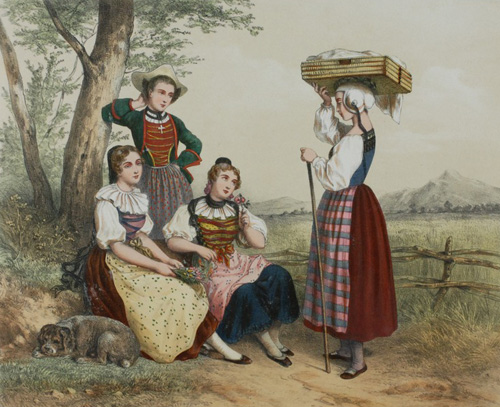
Canton of Schaffhausen. Women in traditional clothing. Drawing from Swiss National Library
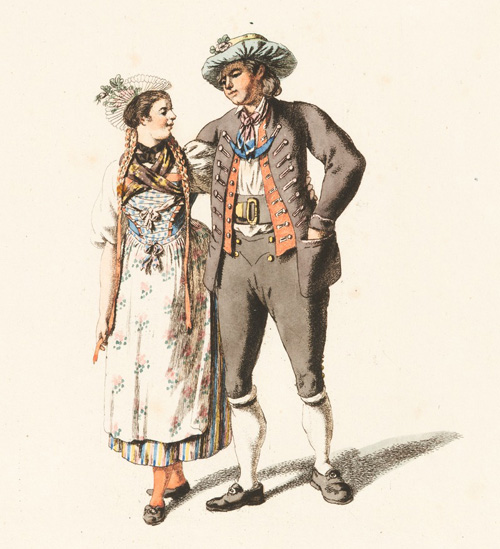
Canton of Schwyz. Man and woman in national garments. Drawing from Swiss National Library
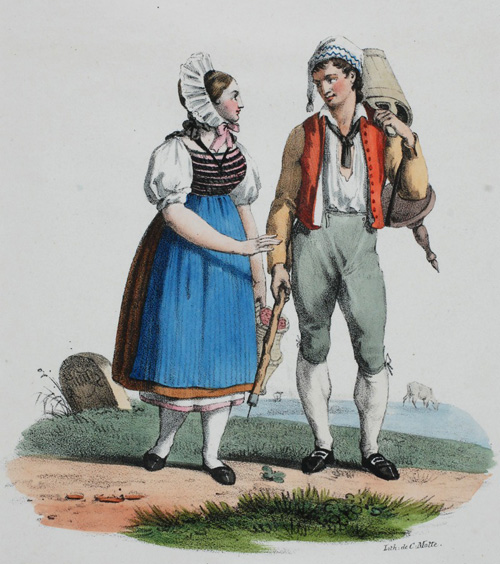
Canton of Solothurn. Man and woman in national costumes. Drawing from Swiss National Library

Canton of Unterwalden. Woman attired in traditional outfit. Drawing from Swiss National Library

Canton of Valais. Woman in modern national costume. Photo from Wikipedia.org
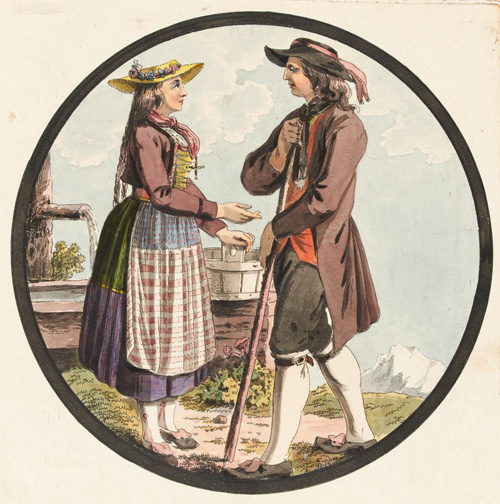
Canton of Zug. Man and woman in national garments. Drawing from Swiss National Library
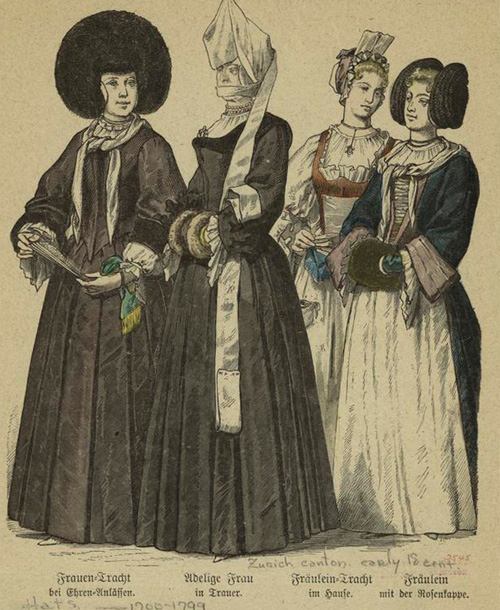
Canton of Zürich. Women in traditional outfits. Drawing from Swiss National Library
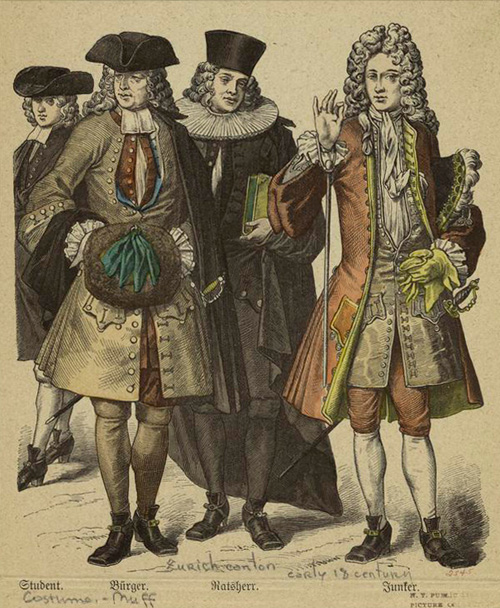
Canton of Zürich. Men in traditional outfits. Drawing from Swiss National Library
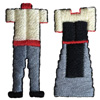


BB